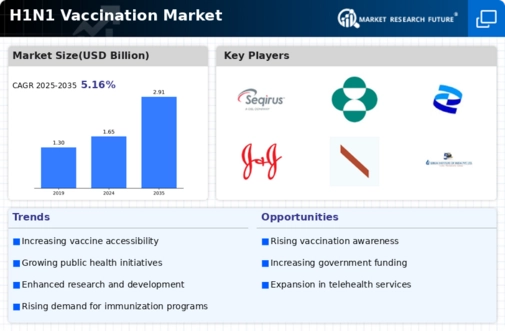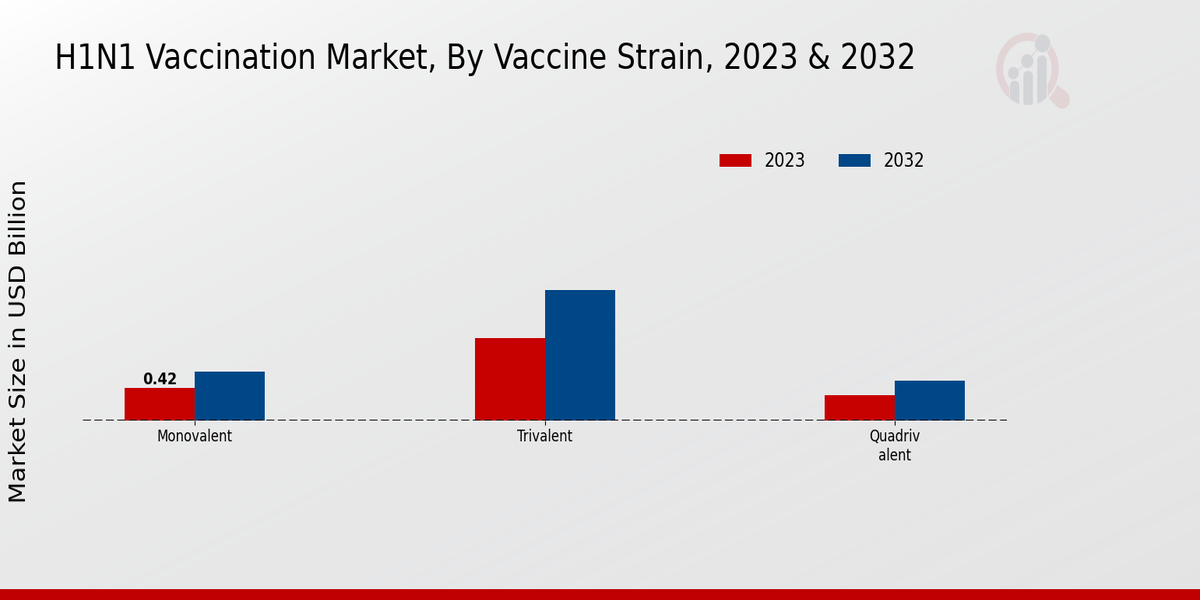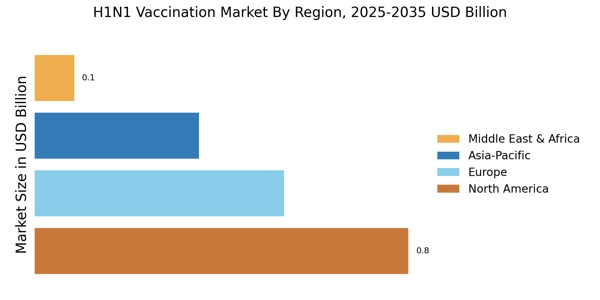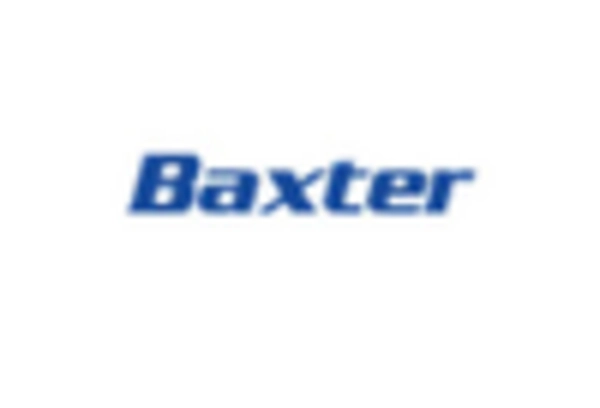Rising Incidence of H1N1 Cases
The H1N1 Vaccination Market is experiencing a notable surge in demand due to the rising incidence of H1N1 cases. Reports indicate that seasonal outbreaks of H1N1 continue to occur, prompting health authorities to recommend vaccinations as a preventive measure. In recent years, the number of reported cases has fluctuated, with certain regions experiencing spikes that have raised public concern. This trend suggests that the need for effective vaccination strategies remains critical. As a result, healthcare providers are increasingly focusing on vaccination campaigns to mitigate the impact of H1N1, thereby driving growth in the H1N1 Vaccination Market. Furthermore, the potential for new strains to emerge necessitates ongoing vigilance and vaccination efforts, reinforcing the importance of this market in public health initiatives.
Advancements in Vaccine Technology
Technological advancements are significantly influencing the H1N1 Vaccination Market. Innovations in vaccine development, such as the use of recombinant DNA technology and adjuvants, have improved the efficacy and safety profiles of H1N1 vaccines. These advancements enable quicker responses to emerging strains, which is crucial in a landscape where the virus can mutate. Moreover, the development of intranasal vaccines and other delivery methods has the potential to enhance patient compliance and broaden the reach of vaccination programs. As these technologies continue to evolve, they are likely to attract investment and interest from pharmaceutical companies, further propelling the H1N1 Vaccination Market forward. The integration of advanced technologies not only improves vaccine performance but also fosters public confidence in vaccination efforts.
Government Initiatives and Funding
Government initiatives play a pivotal role in shaping the H1N1 Vaccination Market. Various countries have implemented vaccination programs aimed at increasing immunization rates among vulnerable populations. Funding allocated for public health campaigns has seen a marked increase, with governments recognizing the importance of vaccination in controlling infectious diseases. For instance, recent budgets have earmarked substantial resources for H1N1 vaccination efforts, which include public awareness campaigns and distribution of vaccines. This financial support not only enhances accessibility but also encourages healthcare providers to participate actively in vaccination drives. Consequently, the H1N1 Vaccination Market benefits from these initiatives, as they create a conducive environment for vaccine uptake and bolster overall public health outcomes.
Public Health Campaigns and Education
Public health campaigns are instrumental in driving the H1N1 Vaccination Market. These campaigns aim to educate the public about the benefits of vaccination and dispel myths surrounding vaccine safety and efficacy. Health organizations are increasingly utilizing various media platforms to reach diverse populations, ensuring that information is accessible and engaging. The effectiveness of these campaigns is reflected in rising vaccination rates, as communities become more informed about the risks associated with H1N1. Additionally, partnerships between public health agencies and community organizations enhance outreach efforts, particularly in underserved areas. As public awareness grows, the H1N1 Vaccination Market is likely to see sustained demand, as more individuals recognize the importance of protecting themselves and their communities through vaccination.
Increased Focus on Preventive Healthcare
The H1N1 Vaccination Market is benefiting from a growing emphasis on preventive healthcare. As awareness of the importance of vaccination in preventing infectious diseases rises, more individuals are seeking vaccinations as a proactive health measure. This shift in mindset is supported by healthcare professionals who advocate for immunization as a key component of public health strategy. The increasing prevalence of chronic diseases, which can complicate H1N1 infections, further underscores the necessity of vaccination. Consequently, healthcare systems are prioritizing vaccination programs, leading to an uptick in demand for H1N1 vaccines. This trend indicates a broader societal recognition of the value of preventive measures, which is likely to sustain growth in the H1N1 Vaccination Market for the foreseeable future.



















Leave a Comment